THE MUSICARTA HANON
Hanon Canon
Page Two
The left hand in all the versions on this page is different to the original. Left-hand versions as 'proper' Hanons are given to practice.
You might notice that the definition of 'canon' as a delayed repetition of the exact same music is being progressively more and more ignored! In reality, most of these examples are harmonisations of the Hanon exercises, with the left hand starting 'late'.
Exercise 9
The left hand is effectively playing tenths below the right hand.
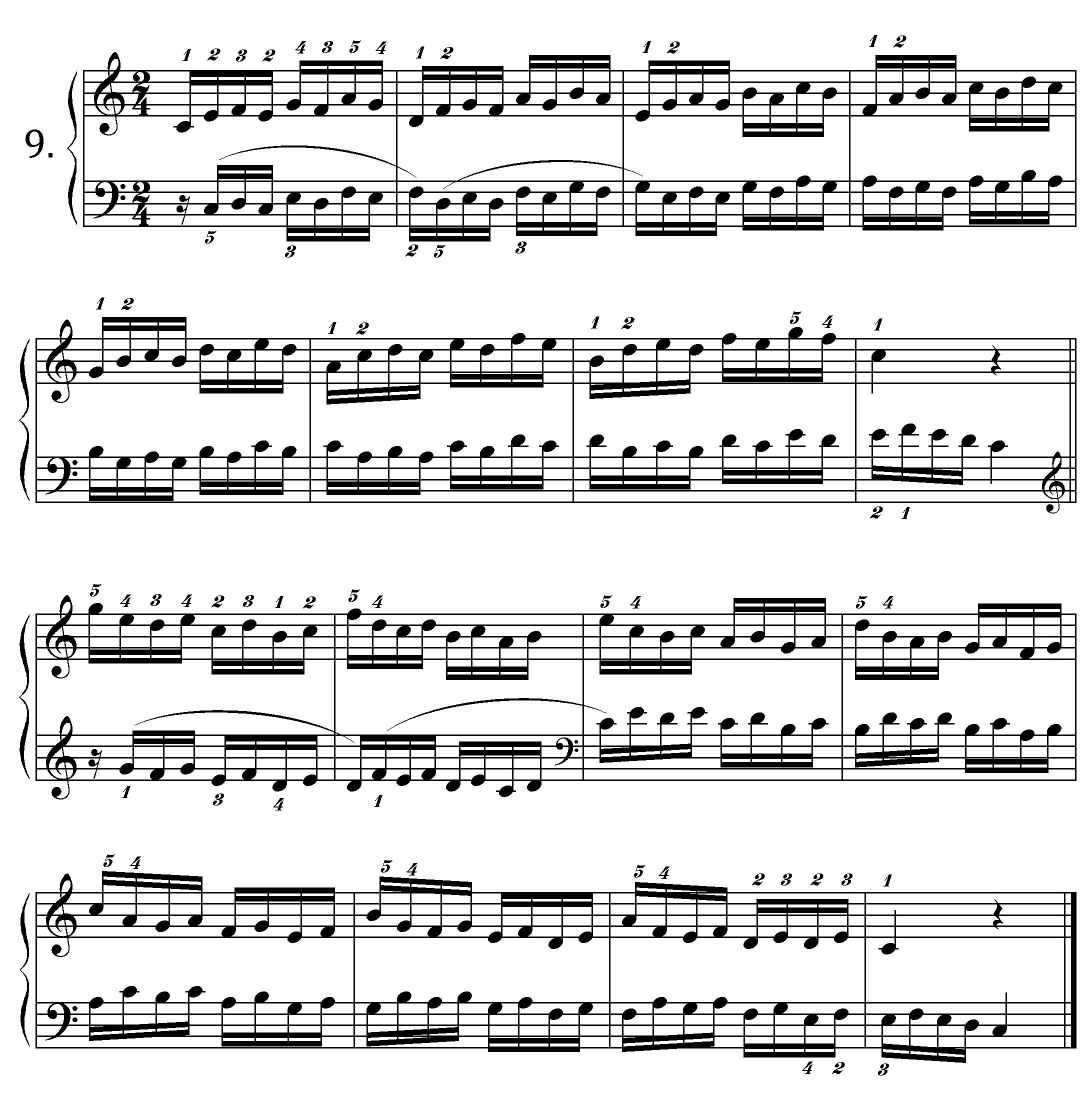
The Exercise 9 left hand ascending pattern spans only four notes and never uses the thumb.
(If played as a two-handed pattern, this will apply to the right hand descending.)
The left hand pattern descending is pure inverse of the ascending (but not as regards fingering).
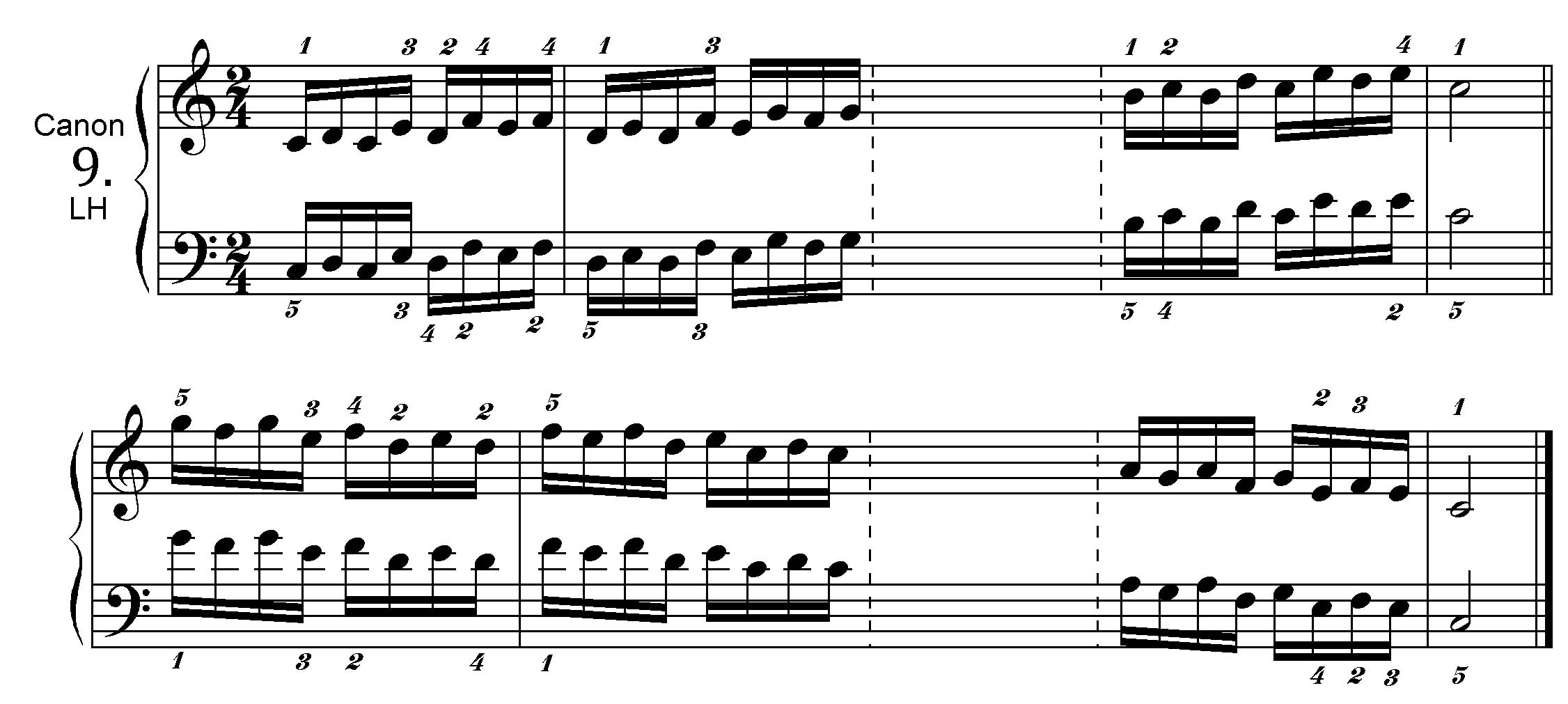
Exercise 11
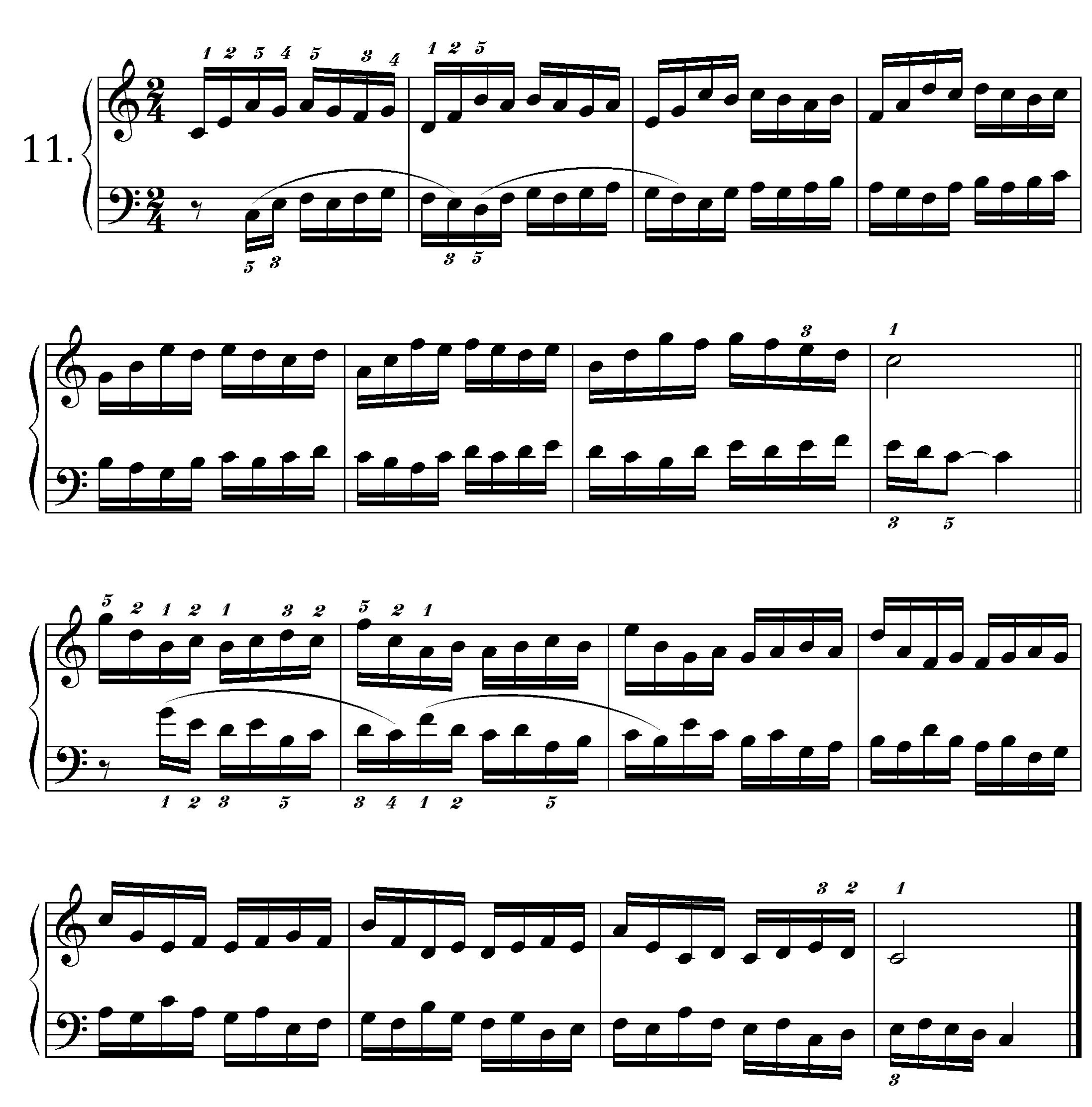
The Exercise 11 left hand ascending pattern covers only a five-finger position and never uses finger 4.
Descending, the left hand pattern is different again. The hand covers the usual Hanon six-finger position and plays 1-2-3-2-5-4-3-4.
This sounds very like a Hanon pattern. Try playing a two-handed ascending pattern with the right hand leading, playing that fingering from C.
Exercise 17
In order to harmonise satisfactorily, the left hand in Exercise 17 plays only a six-note pattern, spanning only five notes (ascending and descending), and simply has a rest where the two missing notes should be.
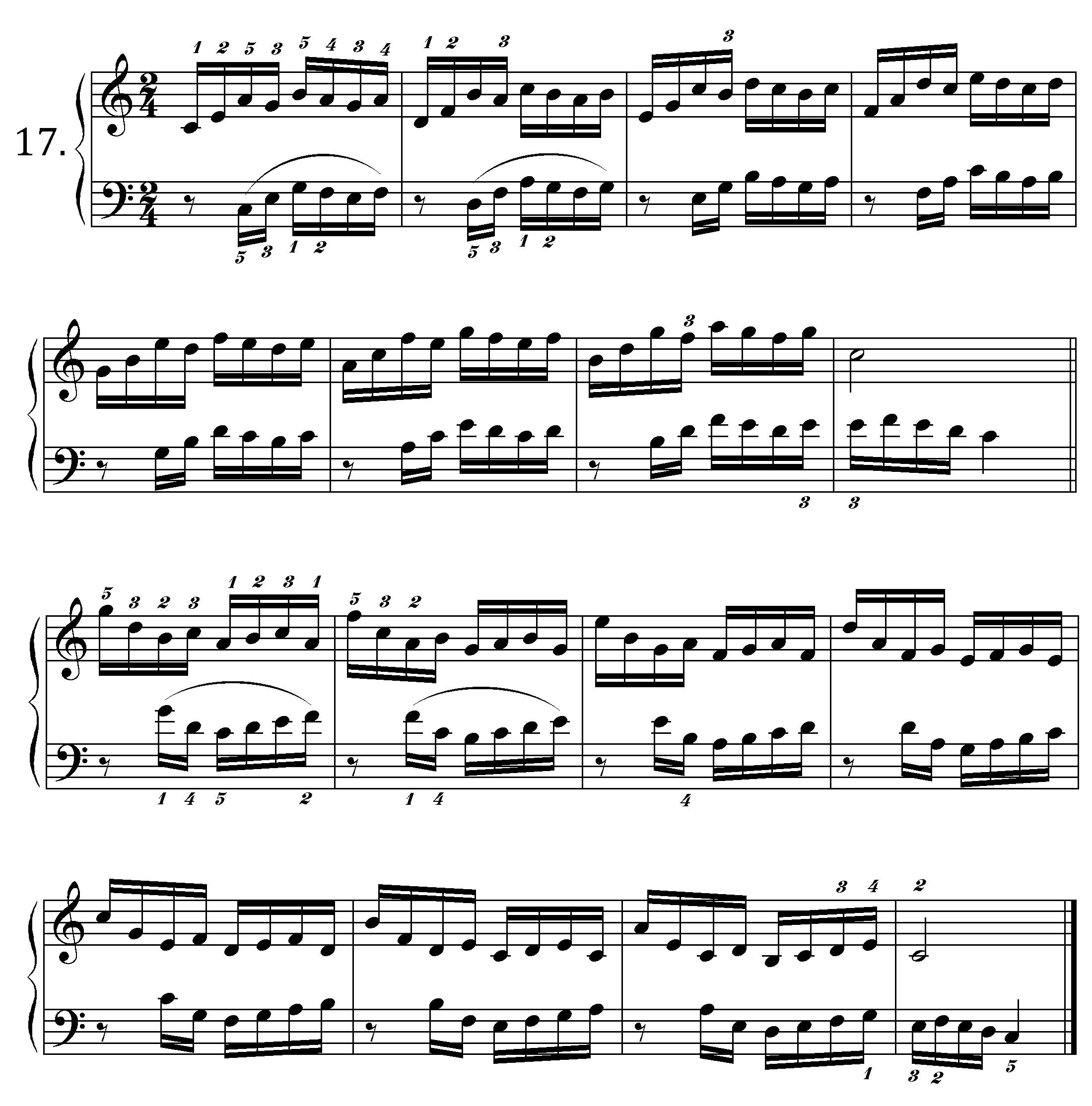
In order to harmonise satisfactorily, the left hand in Exercise 17 plays only six-note patterns, spanning only five notes (ascending and descending).
The rests in the left-hand practice exercise have been removed, so the exercise is in three-eight (six sixteenth notes).
Descending, a note is repeated over the bar line. The hand must make a lively "hop" on it to make playing the music possible.
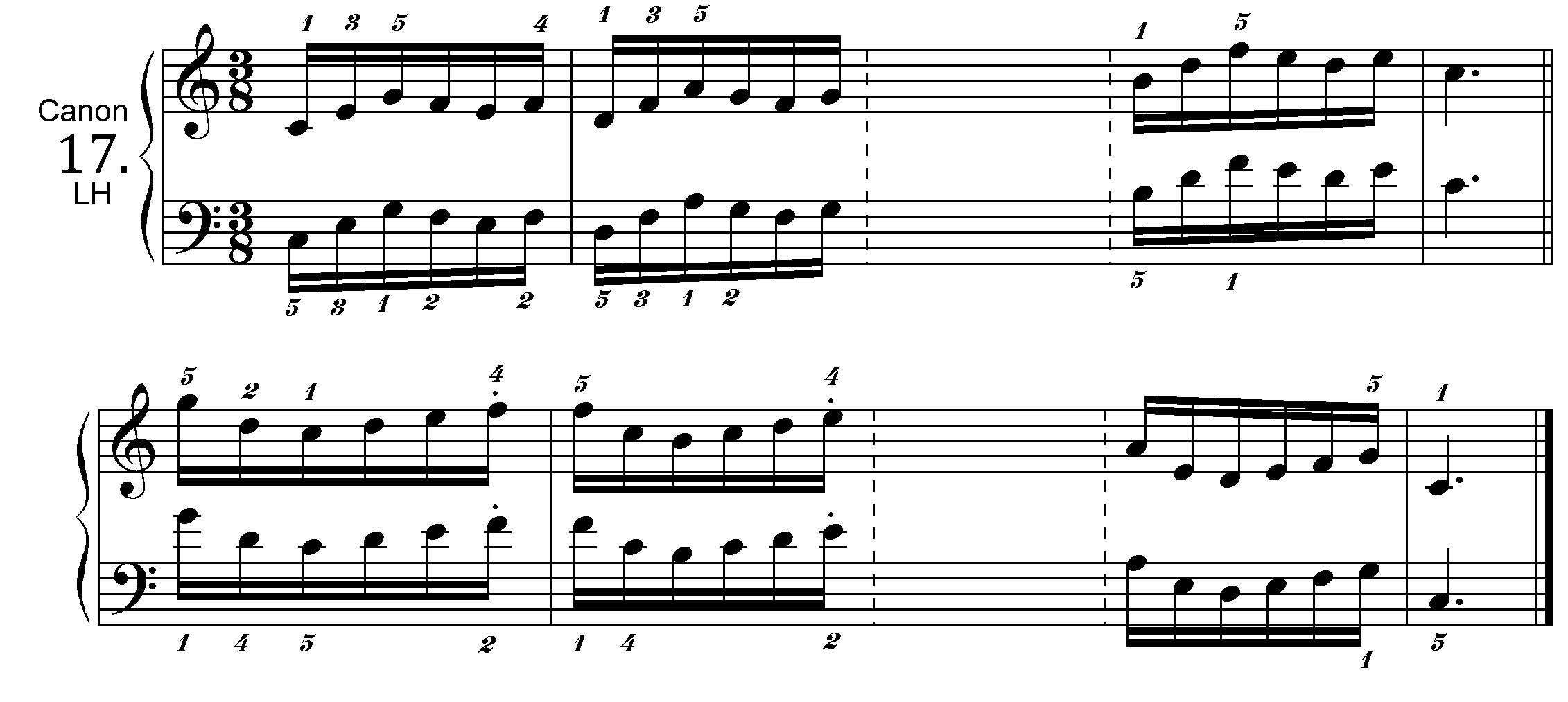
Exercise 19
In order to harmonise satisfactorily, the left hand in Exercise 19 not only changes the right hand original, but ties the last note of the pattern over as well.
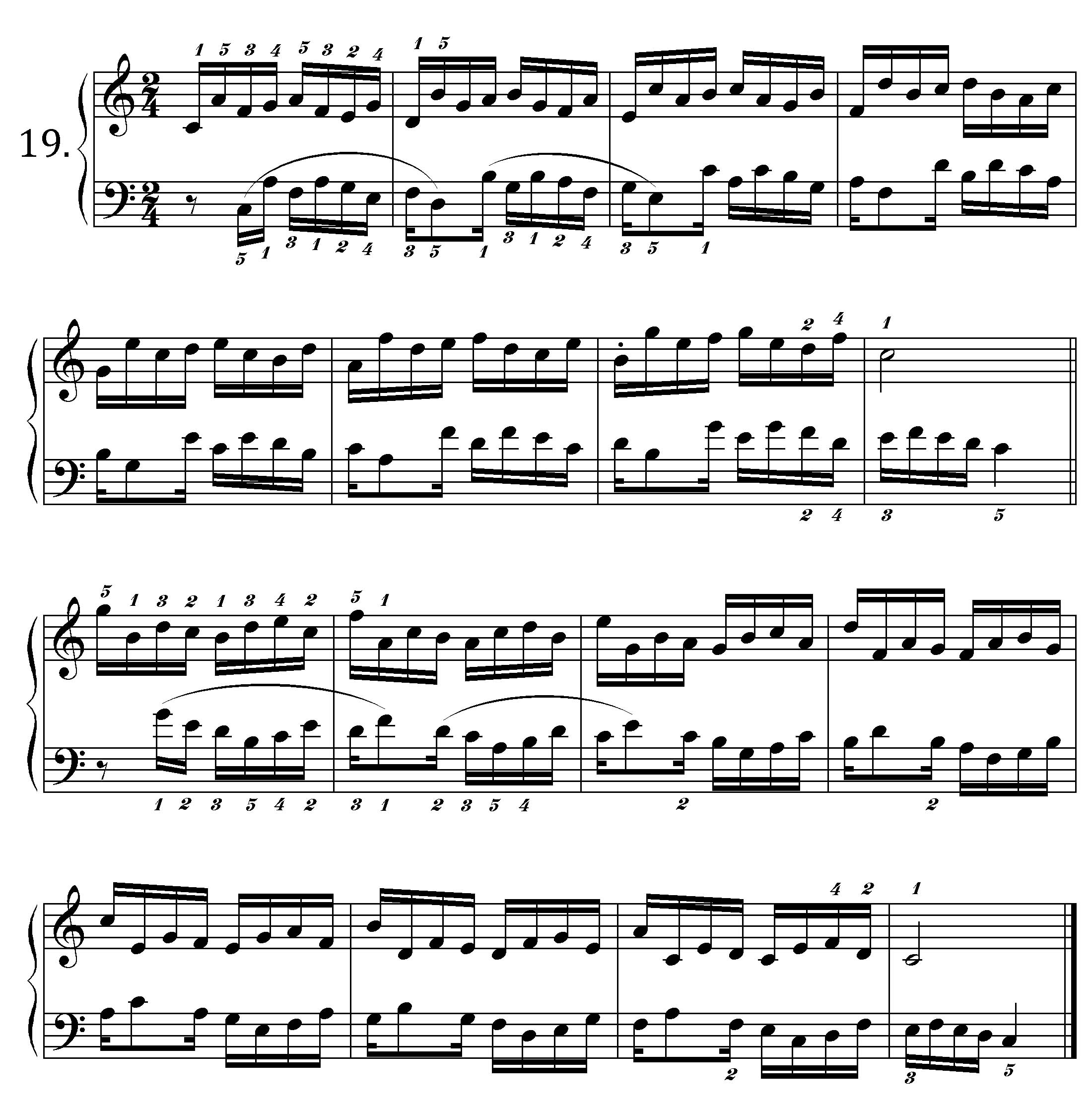
In order to harmonise satisfactorily, the left hand in Exercise 19 plays only seven-note patterns, tying the last one as the first note of the next pattern.
A good exercise in its own right.
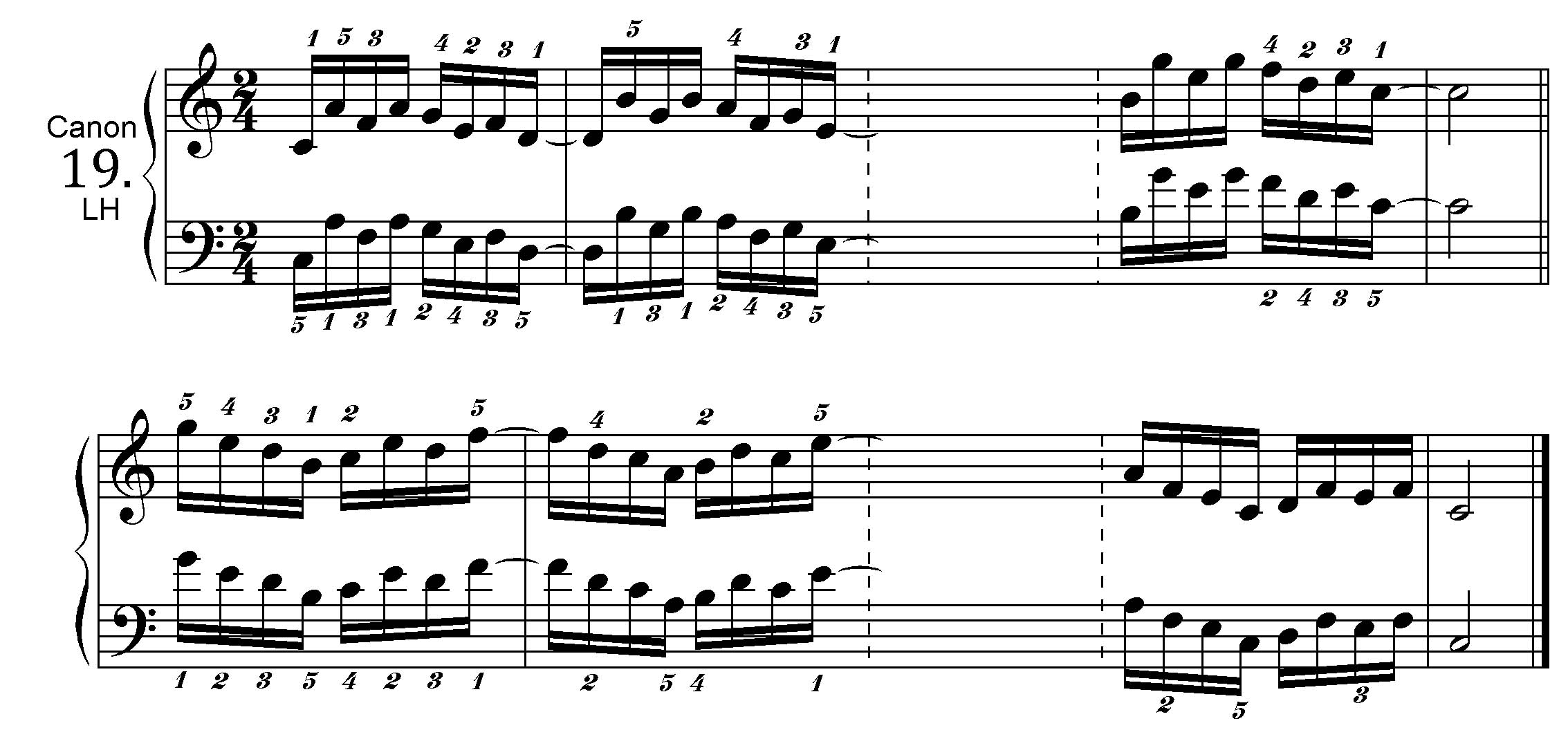
Exercise 20
The left hand pattern is only one note different to the right hand pattern, but descending, it starts only a semi-quaver (16th-note) after the right hand.
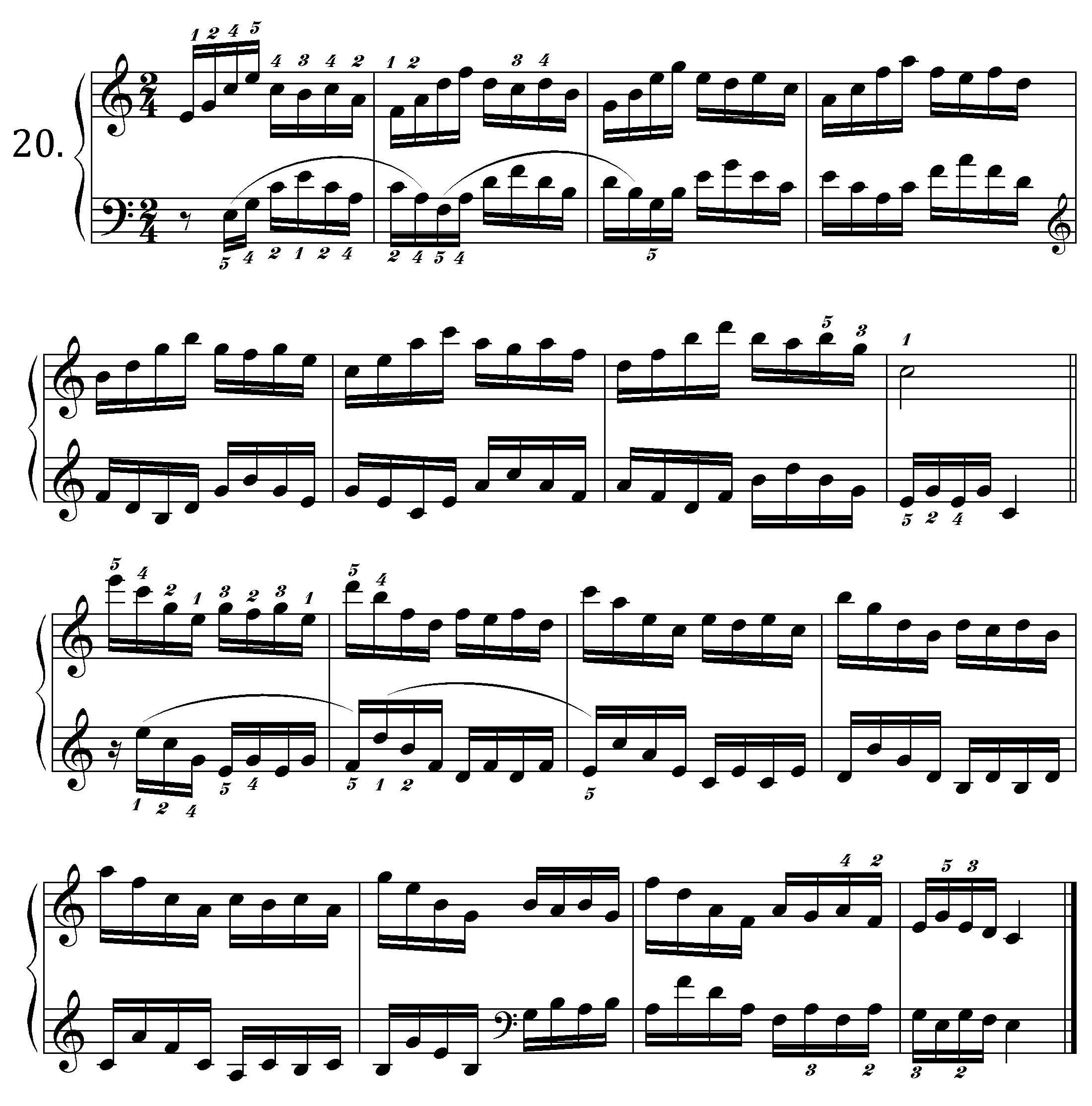
|
Hanon Canon |
|
OUT NOW! |
THE MUSICARTA BEAT & RHYTHM WORKBOOK At last! An effective approach to keyboard rhythm & syncopation skills. Learn more! |
ONLY $24.95! |
MUSICARTA HANON SERIESThe Exercises
Combined Patterns
Hanon in Six-Eight
In Sixths and Tenths
[Two-four] In Sixths and Tenths
[Six-eight] Held Thumbs
(Preparatory) Held Thumbs
(Two Hands) Rhythmic Variations
A to Z Series Rhythmic Variations
AA Series Hanon Canon
"Mind The Gap"
Spreading the Hand
|
The MusicartaA methodical approach to keyboard syncopation for
|
PUBLICATIONS
exciting keyboard
creativity courses
CHORDS 101
WORKBOOK

~HANON~
video course

Musicarta
Patreon
PENTATONICS
WORKBOOK
video course

Creative Keyboard
video course

BEAT AND RHYTHM
WORKBOOK

- Volume 1 -

12-BAR PIANO
STYLES WORKBOOK

MUSICARTA MODES
WORKBOOK

PIANO STYLE

CANON PROJECT
video course

VARIATIONS
video course


- Piano Solo -
video course

- Piano Solo -


YouTube playlists





 THE LOGO
THE LOGO
